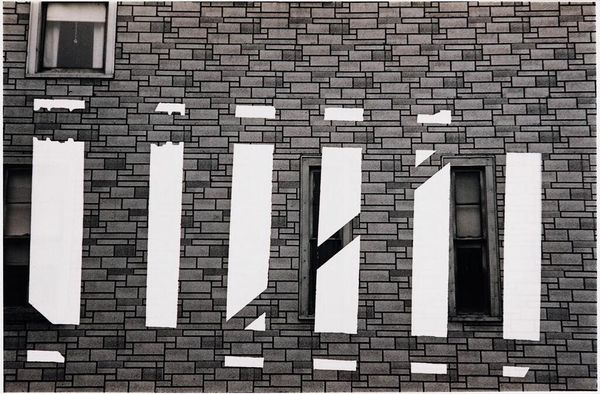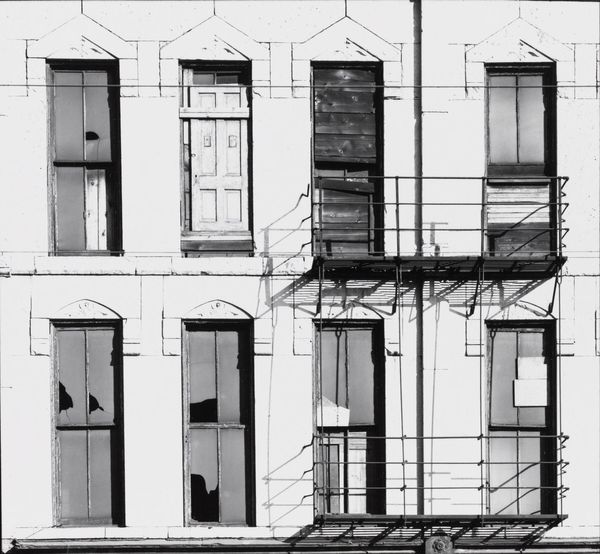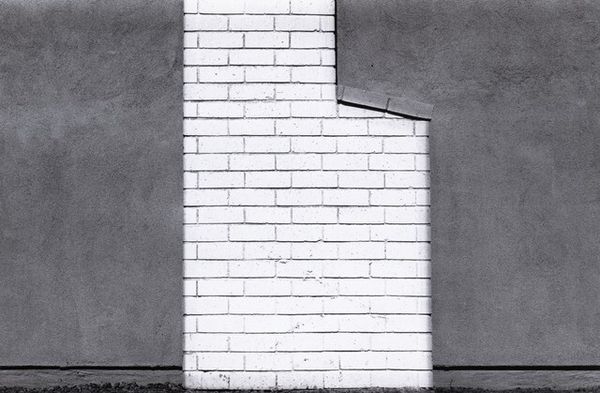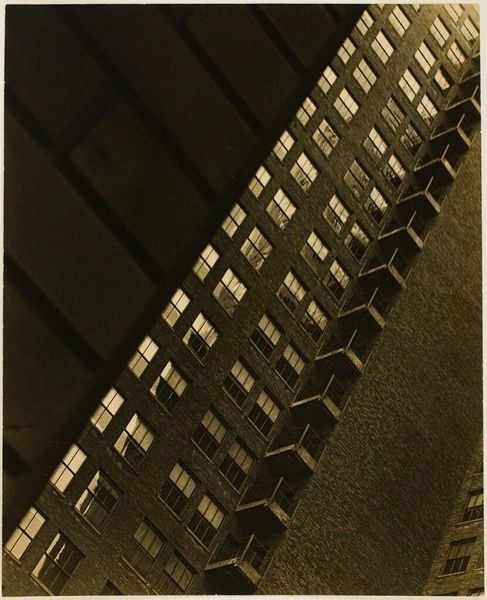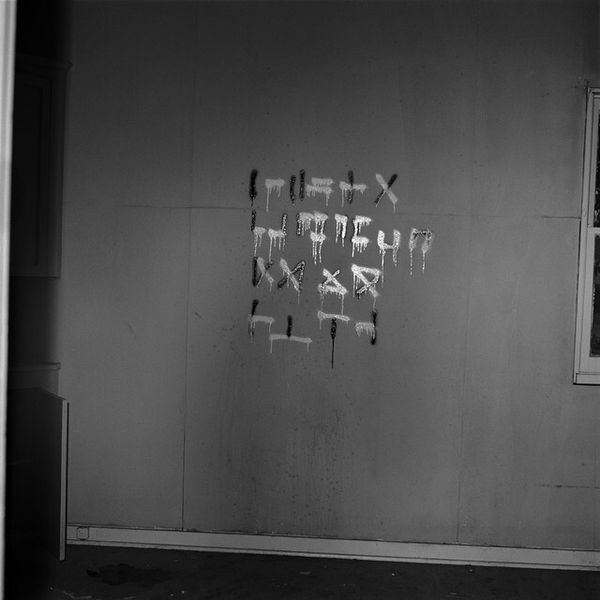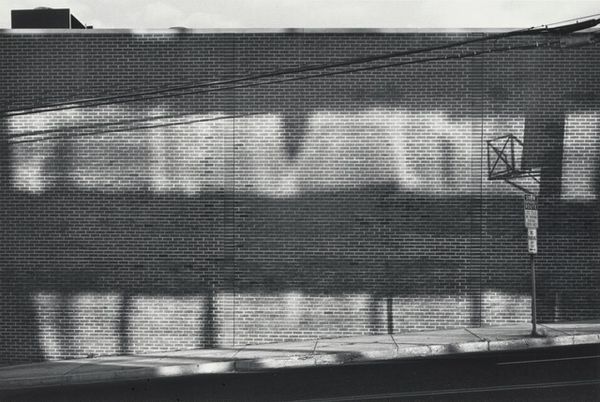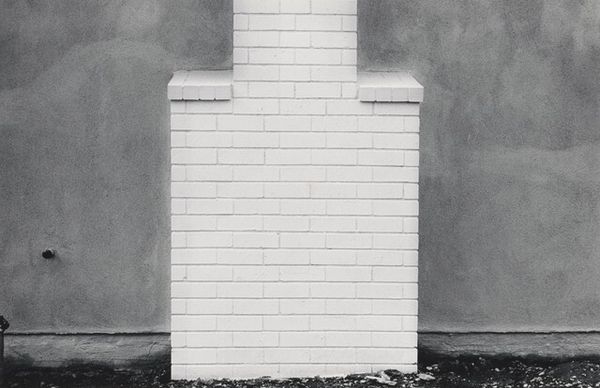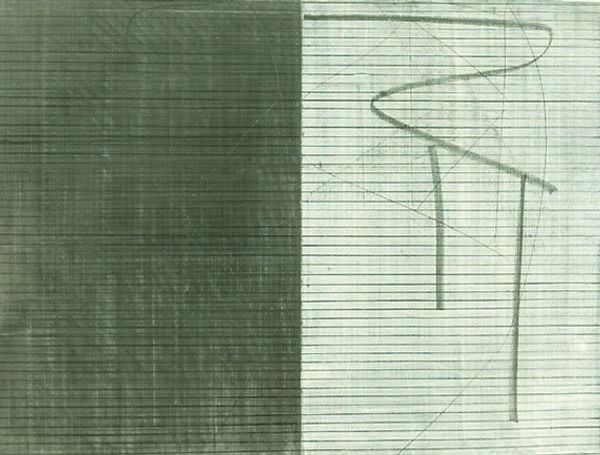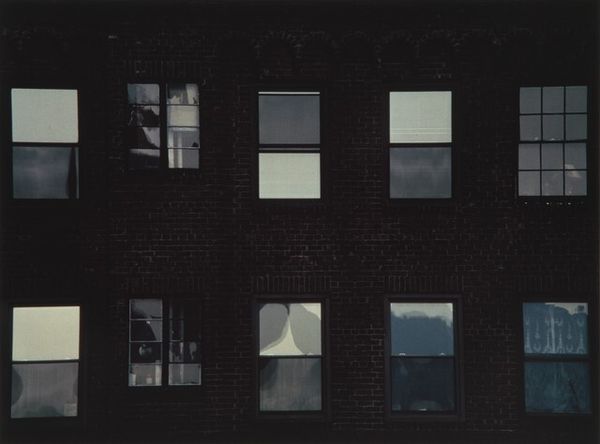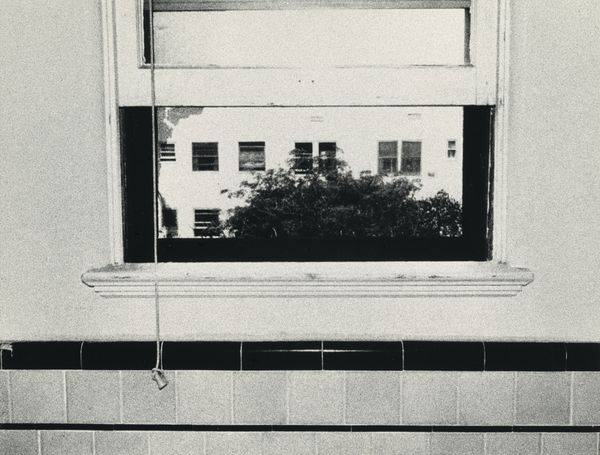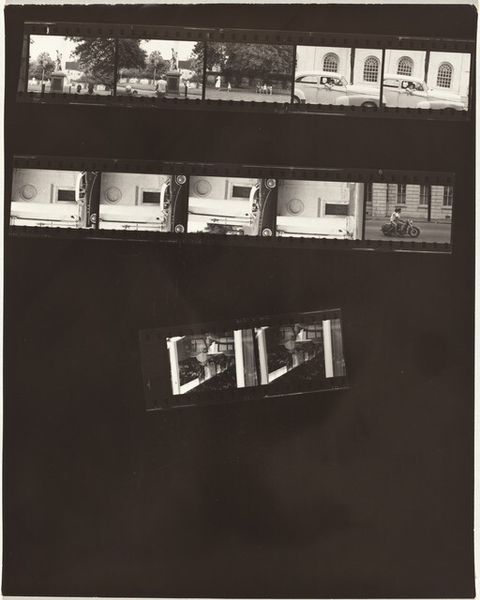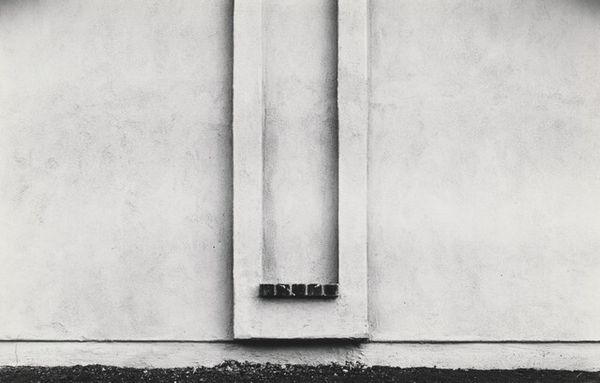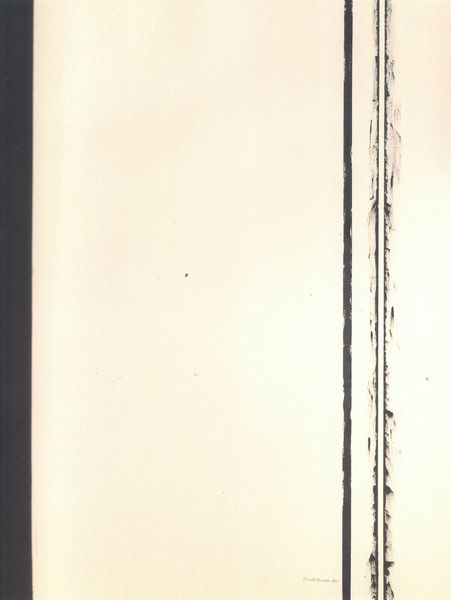
Multiple Exposure: Green Windows and White Bars, Chicago Possibly 1950 - 1979
0:00
0:00
photography
#
abstract
#
street-photography
#
photography
#
geometric
#
modernism
#
monochrome
Dimensions: image: 22.86 × 33.66 cm (9 × 13 1/4 in.) sheet: 27.31 × 35.56 cm (10 3/4 × 14 in.)
Copyright: National Gallery of Art: CC0 1.0
Curator: This is Harry Callahan's "Multiple Exposure: Green Windows and White Bars, Chicago." It’s a gelatin silver print, likely created sometime between 1950 and 1979. Callahan, of course, is well-known for his explorations of the urban environment. Editor: Immediately, I’m struck by the stark geometry of it. The harsh, bright bars cutting across the muted grays and greens – it's visually jarring in the best way. Almost like a glitch in the matrix of a mundane brick facade. Curator: Yes, that tension between the representational and the abstract is very characteristic of the period. It reflects the larger cultural shifts, the tension between the recognizable world and the emerging modern sensibility. The city itself becoming this space of geometric abstraction. Editor: It's interesting you say that, because I was wondering what's being occluded here? Why the censorship? Are we meant to imagine some forgotten commercial facade being effaced? Or an older brick skeleton struggling to breathe in some new Chicago high rise? Curator: Callahan was incredibly interested in layering and photographic techniques. Multiple exposures like this became an attempt to capture time, movement, or even different perspectives of the same space within a single image. Think about it – what perspectives get canonized in urban settings? Editor: Almost feels architectural – literally constructed through addition. The layers adding to a sense of depth and... uncertainty. Maybe it captures the ephemeral nature of cities; things constantly changing, decaying, reforming. Even with its clear subject the effect still remains beautifully cryptic. Curator: Precisely! Consider the post-war period – a city in constant flux, grappling with redevelopment, suburban sprawl and the changing landscape. Callahan’s street photography served almost as documents or indexes of the effects of those socioeconomic shifts. Editor: Well, it leaves me thinking about all the unseen realities behind our own urban interfaces. How much are we really shown? I may want to get out into the streets now! Curator: Perhaps this work calls for precisely this level of questioning: who holds the keys and cameras to capture all its changes? Thanks for your insights.
Comments
No comments
Be the first to comment and join the conversation on the ultimate creative platform.
